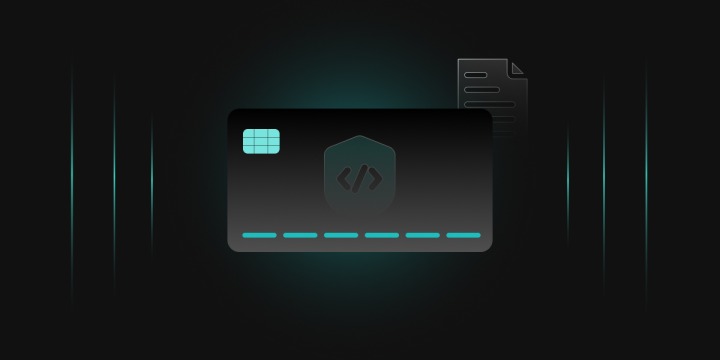In today’s digital world, strong cryptography is the foundation of effective data protection. For industries that handle sensitive information like credit card data, implementing strong cryptographic controls is not optional but mandatory. With the release of PCI DSS v4.0, a new era of compliance has arrived, emphasizing flexibility, risk-based approaches, and deeper transparency.
Among the rising concepts that help achieve this transparency is the Cryptographic Bill of Materials (CBOM), a comprehensive inventory of all cryptographic components used within a system, application, or infrastructure. Assuming that you’re already aware of the topics – PCI DSS and CBOM, we’ll just give you a glance and then directly jump to the requirement section.
What is PCI DSS?
The Payment Card Industry Data Security Standard (PCI DSS) is a set of security standards designed to ensure that all companies that process, store, or transmit credit card information maintain a secure environment. It was established by major credit card companies like Visa, MasterCard, American Express, Discover, and JCB in 2004.
PCI DSS 4.0.1 is a minor revision to version 4.0, released by the PCI Security Standards Council (PCI SSC). It aims to address implementation feedback, fix typographical errors, and provide better clarity in controls, without changing the core intent of version 4.0.
Key Focus Areas in PCI DSS 4.0.1:
- Enhanced flexibility in implementation
- Emphasis on continuous security and monitoring
- Stronger authentication requirements
- Clearer guidance for cryptographic operations
- Improved scoping and segmentation expectations
What is Cryptographic Bill of Materials (CBOM)?
A Cryptographic Bill of Materials (CBOM) is a comprehensive inventory of all cryptographic assets used within a system, application, or software environment. It is similar in concept to a Software Bill of Materials (SBOM), but it focuses specifically on cryptographic components and their dependencies. It includes:
- Cryptographic libraries and modules (e.g., OpenSSL, BouncyCastle)
- Algorithms in use (e.g., AES-256, RSA-2048)
- Certificates and key pairs
- Key management mechanisms
- Hardware Security Modules (HSMs) or Trusted Platform Modules (TPMs)
Some users often get confused between CBOM and SBOM. The difference is very clear – Software Bill of Materials (SBOM) is an inventory of all software components that make up a software application, while Cryptographic Bill of Materials (CBOM) focuses only on cryptographic assets and their related dependencies, ignoring the rest of the software components.
Requirement 12.3.3
“Cryptographic cipher suites and protocols in use are documented and reviewed at least once every 12 months”
This requirement is about ensuring you don’t just deploy encryption and forget it. Instead, you must continuously track and assess your cryptographic environment, a principle at the heart of CBOM.
Let’s now break down the 3 sub-requirements, and analyse how each aligns with CBOM best practices:
1. An up-to-date inventory of all cryptographic cipher suites and protocols in use, including purpose and where used.
What PCI DSS Expects: You must know exactly what cryptography is deployed in your environment, why it’s being used, and where it is being used, including in applications, systems, APIs, devices, and third-party services.
CBOM Relevance: This is the core of CBOM, i.e having a structured, versioned inventory of all cryptographic components.
A strong CBOM should contain:
- Cipher suites (e.g., TLS_ECDHE_RSA_WITH_AES_256_GCM_SHA384)
- Protocols (e.g., TLS 1.2, TLS 1.3, IPsec, SSH)
- Algorithms (e.g., RSA, ECDSA, AES, SHA-256)
- Key lengths and configurations
- Purpose (e.g., “used for REST API data in transit”)
- Where used (e.g., “web load balancer, SFTP server, mobile app backend”)
2. Active monitoring of industry trends regarding continued viability of all cryptographic cipher suites and protocols in use.
What PCI DSS Expects: You’re not just documenting your crypto once, you’re continuously watching for deprecations, known attacks, and cryptanalysis research that could make today’s algorithms unsafe tomorrow.
CBOM Relevance: A CBOM is not static, it must be living and adaptive. That means:
- Monitoring sources like NIST, IETF, ISO, and security advisories
- Understanding when an algorithm is moving from “approved” to “discouraged” or “deprecated”
- Identifying exposure points in your CBOM that depend on soon-to-be-weak crypto
3. Documentation of a plan to respond to anticipated changes in cryptographic vulnerabilities
What PCI DSS Expects: If a cipher or protocol in use becomes vulnerable, what’s your plan? You should already have one before the weakness is exploited.
CBOM Relevance: CBOMs enable proactive remediation by:
- Helping you instantly locate where a deprecated algorithm is used
- Prioritizing remediation based on exposure and criticality
- Mapping crypto dependencies (e.g., “TLS 1.2 is used by our main login portal and 6 microservices”)
Your plan might include:
- Timelines: e.g., deprecate TLS 1.0 within 30 days
- Fallbacks: Support TLS 1.3 with strong cipher negotiation
- Stakeholders: Who is responsible for testing and deploying the change
- Validation steps: Ensure cryptographic strength before go-live
How Organizations Can Implement CBOM?
To comply with Requirement 12.3.3 and achieve real crypto visibility, organizations must operationalize CBOM as part of their security and compliance lifecycle.
-
Discovery and Inventory
- Scan environments using tools like nmap, sslscan, or custom API hooks
- Document all cipher suites, certificates, keys, algorithms, and libraries
-
Classification and Context
- Define the purpose of each cryptographic component
- Link components to applications, services, APIs, or endpoints
-
Version Control and Storage
- Store the CBOM in a version-controlled repository
- Track all changes, patches, and upgrades over time
-
Validation and Verification
- Regularly test configurations using automated tools
- Integrate crypto validation into CI/CD pipelines
-
Monitoring and Alerting
- Subscribe to threat intelligence sources (e.g., NIST, IETF, CVE feeds)
- Automate alerts for deprecated or insecure algorithms
-
Governance and Ownership
- Assign responsibility to cryptographic owners
- Schedule annual reviews aligned with PCI DSS assessments
-
Plan for Crypto Agility
- Ensure systems are designed to easily switch ciphers and protocols
- Maintain a retirement plan for outdated components
How can Encryption Consulting help?
Navigating the complexities of PCI DSS v4.0.1, particularly emerging expectations around cryptographic transparency and the Cryptographic Bill of Materials (CBOM), requires more than just checkbox compliance. It calls for strategic alignment, deep technical understanding, and a clear action plan.
At Encryption Consulting, we specialize in delivering end-to-end compliance services tailored to your organization’s unique risk landscape. Our structured assessments help identify cryptographic assets, pinpoint gaps in documentation, and uncover risks related to undocumented or deprecated algorithms. From there, we develop an actionable, prioritized roadmap to help you achieve and maintain PCI DSS readiness including preparation for future CBOM-related requirements.
Our approach covers these essential areas:
- Cryptographic Inventory & Discovery: We assess your environment to build a detailed cryptographic inventory, helping you identify keys, certificates, algorithms, and libraries across your systems.
- Gap Analysis Against PCI DSS and CBOM Readiness: Our assessments highlight where current practices may fall short of emerging expectations, including cryptographic lifecycle management.
- Roadmap for Remediation: We deliver a practical, phased roadmap with clear remediation steps, adopting best practices for sustainable compliance.
- Expert Guidance: Our consultants work closely with your team at every stage, providing clarity and ensuring alignment with both current PCI DSS controls and future CBOM requirements.
Conclusion
PCI DSS 4.0.1 Requirement 12.3.3 is more than a checkbox, it’s a strategic mandate to understand, monitor, and manage cryptographic risk. In a world where algorithms age quickly and attackers grow smarter, cryptographic transparency is non-negotiable.
A CBOM acts as a living blueprint of your cryptographic environment. It supports security teams, compliance auditors, developers, and executive stakeholders in making informed, risk-based decisions about cryptographic hygiene.
By implementing a CBOM:
- You’ll be better prepared to comply with PCI DSS 4.0.1
- You’ll reduce time to respond to crypto-related vulnerabilities
- You’ll elevate your overall cryptographic governance maturity




